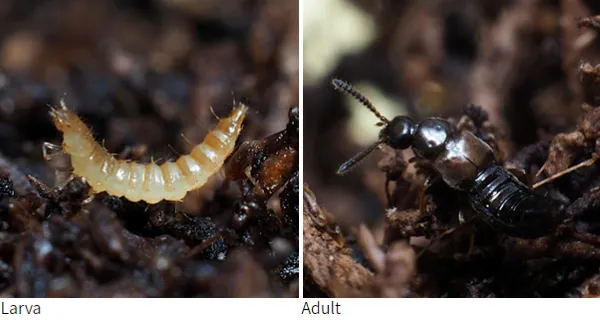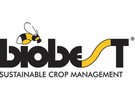The predator Atheta-System is playing a leading role in preventative and curative control strategies for thrips, sciarid fly (fungus gnats) and shore fly in glasshouse-grown ornamental crops in France.
With a voracious appetite, this tiny beneficial rove beetle has become part of multi-pronged strategies to control these problem pests in crops including cyclamen, roses, gerbera and geraniums.
Multi-pronged approach
“In respect to thrips - such as WFT (Frankliniella occidentalis) - Swirskii-System and Amblyseius-System are well established biologicals for controlling pest larvae on the aerial parts of the plant,” explains Biobest biologicals advisor, Paul Tremellat. “For sciarid and shore fly control, as well as for the control of thrips pupae, Hypoaspis-System and the entomopathogenic nematode Steinernema-System are widely used to control these pests in the substrate.
“Atheta-System is a valuable addition to these strategies as it is further improving the efficiency of control. Ideally used preventatively, it is also playing a valuable role in curative treatments when deployed at a higher rate. By targeting pest pupae on, or below, the substrate surface Atheta-System helps to break the lifecycle.”
Following the release, Atheta adults can be found walking on the substrate surface. Highly mobile, these winged-predators spread quickly through the glasshouse, while the predatory larvae burrow into the substrate.
Preventative is best
“To optimise thrips and sciarid fly control it is best to take a preventative approach,” explains Paul, who has significant experience working with ornamental growers in the South of France. “Starting early in the growing season helps the predator build up, giving high levels of control later on when pest pressure increases.”
Unlike some predators, Atheta-System works well over a wide temperature range, 10 to 35°C. Usually released from March onwards, the beetles can be effectively deployed prior to planting and, if necessary, as early as December (temperature permitting). Even if adult pests have not yet emerged from the soil, Atheta will get to work controlling pupae carried over from last season.
Three release strategies
Depending on factors including the crop stage and pest severity, Biobest recommend one of three introductory programmes.
- In an established, actively growing crop, Biobest recommends using a breeding system: in one large tub half filled with humid substrate, a unit of Atheta-System containing 500 adults is released. With simple maintenance, the system lasts 1-2 months and is sufficient for up to 500m². Each tub needs to be fed weekly, (with one teaspoon of specific granular food), have water added to help maintain humidity and be stirred. Adult beetles emerge from holes in the side of the tub.
- In seedlings and very young crops, Biobest recommends introducing Atheta-System as loose material in 10-20 small piles, or two beetles per square metre, distributed evenly throughout the crop. This should be repeated at least twice, at an interval of two weeks. Supplementary feeding is not recommended.
- Where sciarid hotspots have been identified, a new strategy is showing promising results. Using a variant of the breeding system described above, growers create multiple small breeding systems using smaller tubs, which are sited directly in the pest hotspots. This brings all stages of the Atheta lifecycle to areas with sciarid problems. As necessary, these smaller pots can be moved to new hotpots, as identified, gradually diffusing the Atheta to where it is needed in the crop.
“Employing Atheta-System in addition to existing control strategies we are seeing good results for thrips, sciarid fly and shore fly control in potted glasshouse-grown ornamental crops,” says Paul. “This highly efficient predator is playing a vital role helping to break the pest lifecycle and hence stopping, or significantly slowing down, infestations.”
Atheta-System is best released early in the morning, or late in the day, as it prefers a humidity of 50-80%.
Atheta – what to look for
Atheta can be used on all substrates including soil, peat-based, peat-free, coir and rockwool.
Just 2-3mm in length, the adult beetles are dark brown to shiny black in colour and are covered in hairs. The three larval stages, found in the soil, vary from white to orange/brown in colour and all feed voraciously on pest pupae found underground.

At 25°C, the lifecycle takes three weeks from egg to adult. While thrips and sciarid adults can be monitored with Bug-Scan blue sticky traps, scouting for this nocturnal predator is best carried out at night. Nevertheless, Atheta can still be seen crawling on the substrate during the day.
 Biobest
Biobest